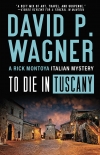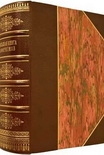To Die in Tuscany David Wagner (inspirational books for women txt) 📖

- Author: David Wagner
Book online «To Die in Tuscany David Wagner (inspirational books for women txt) 📖». Author David Wagner
“I hope you enjoy this,” said Tucci while spreading a napkin over her lap. “And that you have an appetite. Their portions can be quite generous.”
“I’m ready,” said Rick.
The rustic setting—brick, dark wood beams, farm implements decorating the walls—called for an appropriately rustic start to the meal. They decided to share an antipasto platter with a bottle of the house red.
“Loretta, how did you come to evaluate the drawing?” Betta asked. “Did the woman who found it come to see you at the museum?”
“No, it wasn’t that way at all. She had no idea that it was by Piero, nor even knew who Piero was. She knew about our Madonna, of course, like everyone in town, but it hadn’t occurred to her that it was by the same artist. No, when she found the sketch she called an art dealer in Urbino.”
“Bruzzone.”
“Yes, Bruzzone.” The wine arrived and was poured. After a quick toast she took a sip and returned to the story. “It was Bruzzone who contacted me when he came down here himself after the woman had called him. He recognized the face immediately as the sleeping soldier, but he wanted to be sure it was authentic. I was the nearest Piero specialist.”
The waiter set a platter in the center of the table. Arranged on it was an assortment of sliced prosciutto, salami, and bresaola, next to a row of toasts covered with a meaty spread. Rick nodded to the two women, who picked up forks and transferred some of it to their plates. When they finished serving themselves he took his portion.
“Was there any doubt about its authenticity?” Betta asked before taking a bite of the toast.
“At first I didn’t want to get my hopes up. As you can imagine it was very exciting when Bruzzone pulled it out of the envelope. But it didn’t take long to confirm it. The composition, the lines, everything about it pointed to Piero. I did tell Bruzzone he should have the paper and charcoal tested and dated, just to be sure, and he did that. I think he took it to a specialist in Milan after I had studied it for a few days in my museum office and called him to confirm my evaluation.”
“Did it have the little holes?” Rick asked.
Tucci gave him a blank look and then understood. “Oh, you mean what is called pouncing, like the angels you saw. No, it was a study he did before coming up with the final idea for how the figure would look. In fact there are some subtle, minor differences between the drawing and the finished work in Sansepolcro. It looked like it was out of a sketchbook, so there may have been others. Maybe they’ll turn up sometime as well.”
“It’s unfortunate that the drawing could not have been put in your museum, having been found in Monterchi.”
“I agree, Betta. We could have put it in a place of honor. But the city didn’t have the funds to buy it, and the woman was not in a position to donate it. Signor Bruzzone told me she was of very modest means, so it is good that she was able to benefit from the discovery. If it was going to be put in a museum, Sansepolcro was where it belonged, next to the painting it was drawn for.”
“Let’s hope it is eventually found and put there, as the donor intended,” Rick said. “These toasts are excellent. What’s on them?”
“It’s usually game of some sort. Possibly pheasant.” She took a bite. “Maybe duck. Have you been able to see some of Urbino’s art while working on the case?”
Betta cut a slice of prosciutto and put it on a piece of crusty bread. “We were at the Galleria Nazionale this morning to interview the director and saw a few works.”
“Vitellozzi? He’s getting ready for that big exhibit.”
“He was doing just that when we talked to him,” said Rick. He’d finished his share of the antipasto and was thinking of the pasta course. The waiter was on his wave length, appearing to ask what they would like next. Perhaps some freshly rolled pici in the sauce of their choice?
“This is filling me up,” said Betta. “I think I’ll skip the pasta and go directly to a secondo.”
“I agree with that,” said Tucci. “But Riccardo, you go ahead and order some pici. They’re very good here.”
“No, no,” Rick answered with a sigh, “I’ll also pass on the pasta.”
“He loves playing the martyr,” Betta said before turning to the waiter. “What do you suggest?”
“The chef made an excellent cosciotto di maiale al chianti this morning.” Perhaps for Rick’s benefit, he added, “It comes with roasted potatoes.”
The order went to the kitchen.
“If you’ve been to the Galleria Nazionale you’ve seen the best that Urbino has to offer,” Tucci said. “The house of Rafaello is interesting from a historic point of view, but there’s not much to see there as far as art.”
“We’ll be seeing some privately-owned art this evening,” said Betta.
“Oh, really? Whose collection?”
“A man named Morelli.”
Tucci looked past Betta and then back. “Sorry, I thought it was someone I knew from Sansepolcro. Did you say Morelli? I think I’ve heard of him. What does he collect?”
Rick wondered if Betta would say “women,” but instead she answered: “I’m not sure, but he apparently is one of the largest private collectors in Urbino. I met him this morning, and when he found out I worked for the ministry he extended the invitation.”
There was no response from Tucci. She took her wineglass in hand and brought it to her lips just as the plates of their next course were brought to the table. Each had thin slices of pork lightly spread with the dark red sauce from the wine in which it had been roasted. Crisp squares of roasted potatoes completed the dish. That the pork leg was cooked in Chianti—almost the official wine of Tuscany—reminded Rick they were in that region, albeit on its most eastern





Comments (0)